This easy recipe for homemade chicken stock uses leftover rotisserie or roast chicken and simple vegetables and seasonings. This is the best way to fully enhance homemade soups, stews, sauces, and more!
The best part about homemade chicken stock? Enjoying Ina Garten’s perfect roast chicken recipe first!
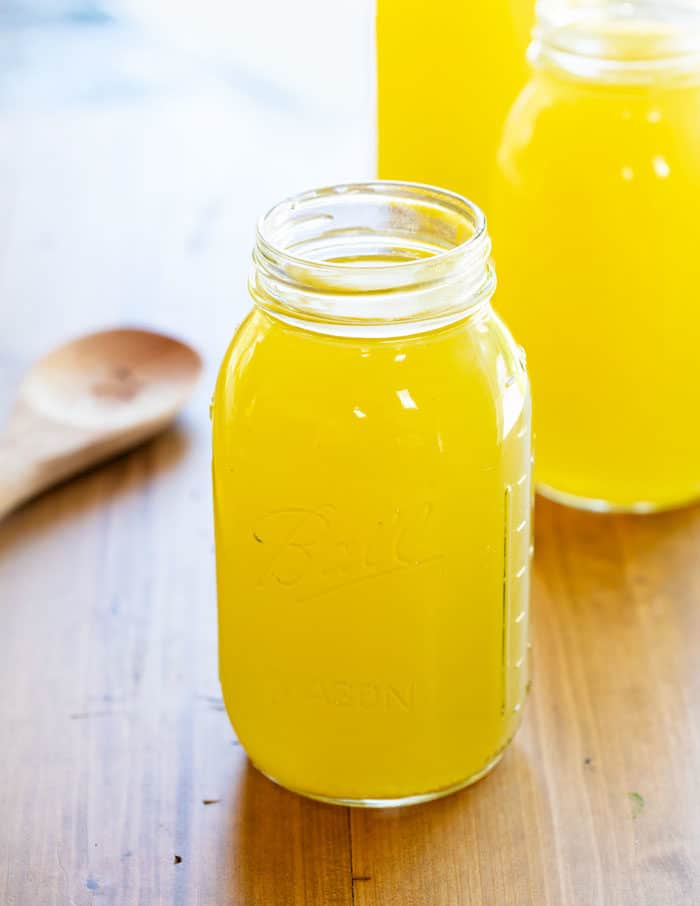
It’s no big deal, I’ve only been meaning to put a homemade chicken stock recipe on the blog for like… 5 years now.
Welp, better late than never, folks!
I can’t stress enough how much better your soups, stews, sauces, and basically any recipe will taste when you use homemade chicken stock instead of the boxed or canned stuff.
Let’s get into some of the info you need to know!
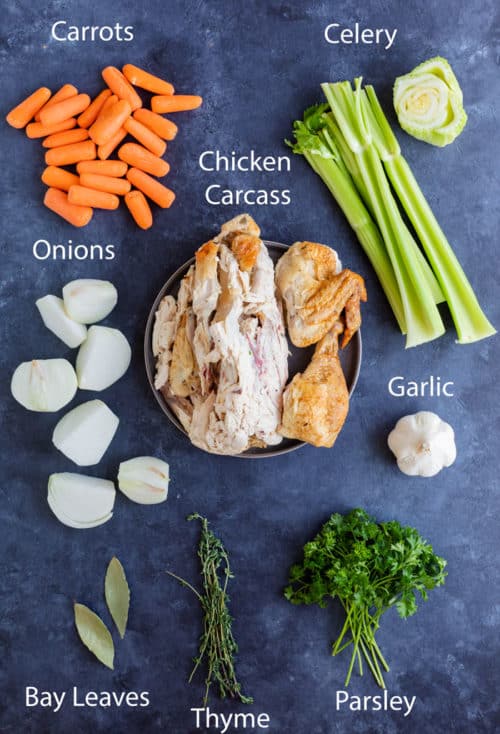
Chicken Broth vs. Chicken Stock
These terms are often used interchangeably, but there are some differences between the two:
Chicken Broth:
- Made from simmering the meaty parts of the chicken/turkey for a shorter amount of time.
Chicken Stock:
- Made from simmering the bones (vs. meaty parts), for longer periods of time, (up to 24 hours.)
Chicken Stock tends to have a greater depth of flavor, as long-simmered bones release gelatin into the stock.
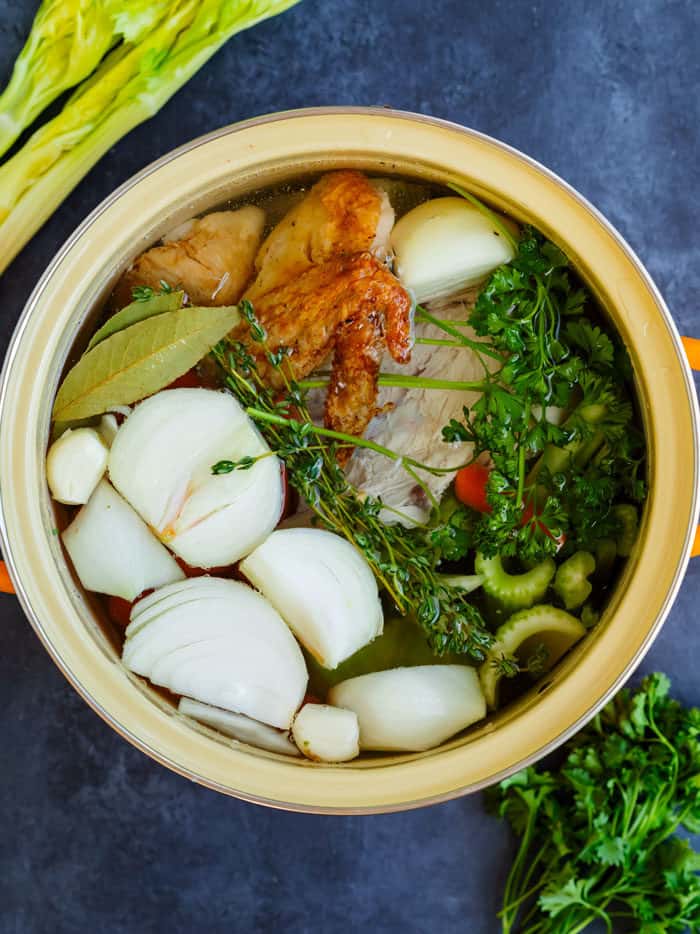
Best Vegetables for Chicken Stock
- Carrots, Onions, and Celery are the most common vegetables used for making homemade chicken stock and are a great way to clean out your salad crisper!
- The white part of a leek may also be used.
- Certain vegetables such as beets should not be used as it will discolor the stock. Additionally, vegetables such as brussels sprouts or broccoli can overpower the flavor of the stock and are not ideal.
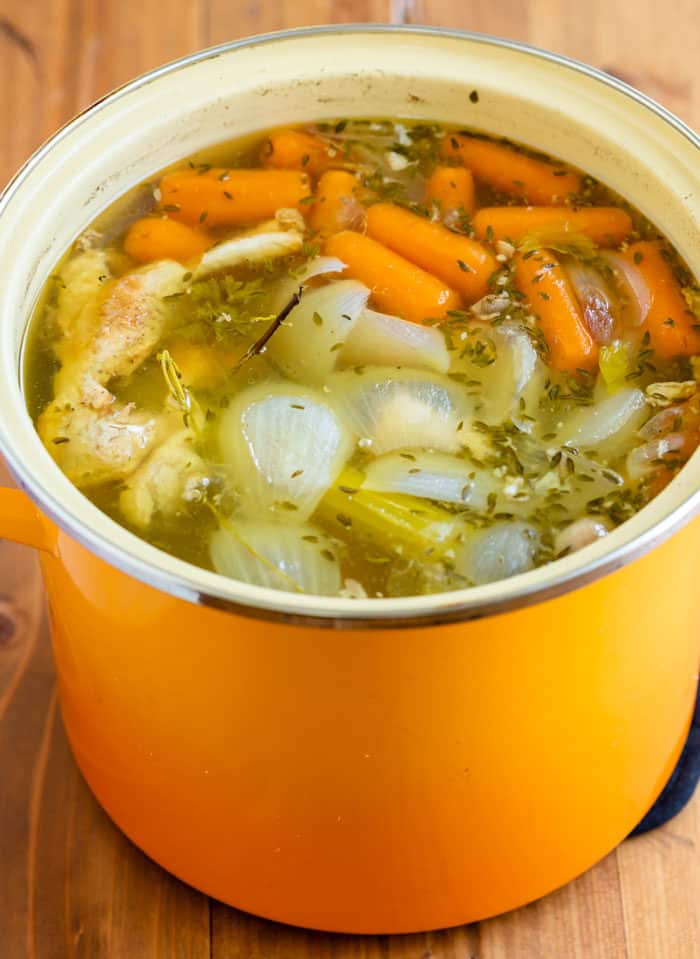
Seasonings for Chicken Stock
This recipe calls for fresh parsley, thyme, and bay leaves, however you can also add rosemary and peppercorns.
Fresh seasonings bring out the best flavor, however dry can be used if needed.

Can you Freeze a Chicken Carcass to Make Stock Later?
- Yes! Wrap all of the leftover carcass, bones, and any meat in foil and place it in a labeled freezer bag to make stock another time!
- No need to defrost the chicken prior to making the stock, it will defrost perfectly as it simmers.
Storage
- Chicken stock can be store in an airtight container in the refrigerator for 4-5 days or in the freezer for up to 9 months.
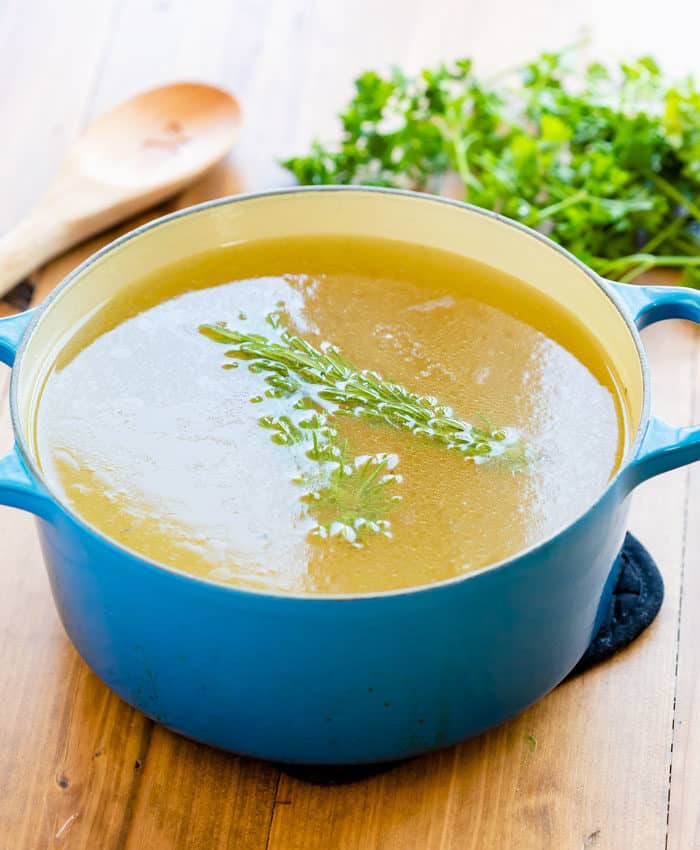
Tools for This Recipe
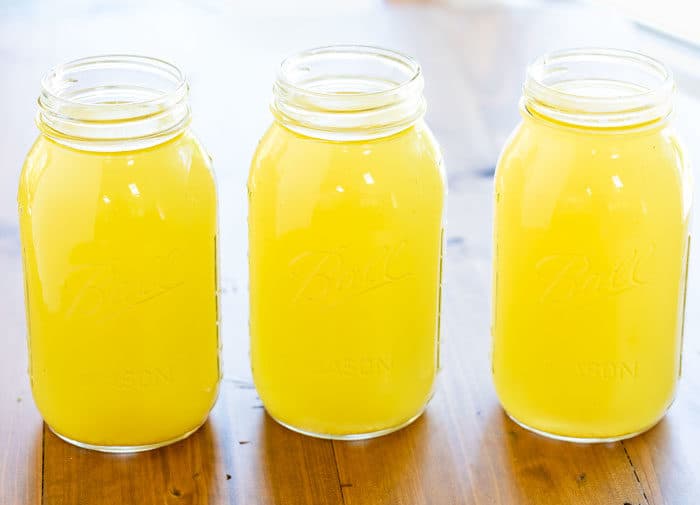
Try These Next!
Follow Me!
- Join my free email list! You’ll get just one email a week with my latest recipes!
- Plus, follow me on Facebook, Instagram, and Pinterest. I love connecting with you guys. 😊
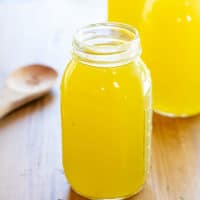
Homemade Chicken Stock
Ingredients
- 1 leftover (cooked) chicken carcass, including any additional leftovers
- 2 large carrots, or 10-12 baby carrots
- 1 yellow onion, sliced into chunks, skins left on if desired
- 2 garlic cloves, peeled
- 1 celery head with the stalks sliced off
- 2 stalks celery
- 1 bunch parsley, including stems
- 10 sprigs fresh thyme
- 2 bay leaves
- Salt/Pepper, to taste
Instructions
- Place the chicken carcass in a large stock pot and add all vegetables and seasonings.
- Cover with enough water so that it rises 1-2 inches above the ingredients.
- Bring the water to a boil.
- Immediately decrease the heat to bring the pot to a very low simmer. Cover, and let it gently simmer for at least 4 hours. (Or longer for a higher concentrated broth.)
- Use a Skimmer Spoon (or a Slotted Spoon) to lift out the vegetables and bones.
- Pour the liquid through a fine mesh strainer into a new pot.
- Allow the liquid to cool completely and pour into labeled soup containers or canning jars for freezing, leaving a little extra room for expansion.
- Use for homemade soups, sauces, or any recipe that calls for chicken stock. It will make your recipes taste so much better!


 The Cozy Cookbook is here!
The Cozy Cookbook is here! 



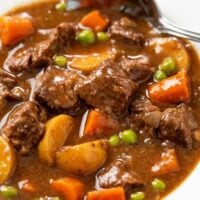
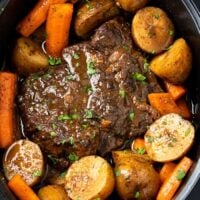




How much water did you use? I used 10 cups and it covered everything plus was 1 1/2 inch over as you said, but mine only yielded 1 quart! I used the carcass from a 5 lb chicken.
Hi Monika! In this recipe, we boil the liquid for a minute, but then we cover it for the rest of the process to ensure the liquid doesn’t evaporate and stays in the pot. If you started with 10 cups and it reduced down to 4 (1 quart), it reduced by more than half. That could only happen over a higher heat setting than indicated or if the pot wasn’t covered. I think that must be what happened. I don’t measure my water but I only lose about an inch or two of liquid in the pot. ❤️
Thanks for the reply! I did exactly all of that. Not sure what happened, but it’s delicious anyway! I just won’t share it! LOL. So, if you only lose about an inch and you yield 7 quarts, then you start with at least 29 cups of water? I know you said you don’t measure, but does that seem right? This was my first ever foray into stock making and I want to get it right next time. I prefer this over purchased for sure. Thank you!
Hi Monika! Depending on how much celery, carrots, and the size of the chicken, etc. will determine how much water it takes to cover it up. Since those things take up room in the pot, it’s hard for me to estimate how many cups of water I add until it’s all covered. When you do it next time around, just be sure the heat is on low and ensure that minimal steam escapes during cooking 🙂
Water?
I need more information if you’re asking a question.
How much thyme should I add of using dry instead of fresh?
The general rule of thumb is 1 tbsp fresh for every tsp of dry 🙂
Sounds yummy! Just what is the celery hea….is it all the leafy top?
Hi Marion, the celery head is the large bottom part of the celery, not the leafy top 🙂
Ohhh!. But maybe you should call it the bottom white root end. To me the head is the top although my initial thought on the “head” was the base white part but then l thought maybe you mean the top where all the leafy and narrow stalks are that some of us toss out, as we only want the celery stalks. Thank you😊
I’m referring to it by it’s proper name. “Celery grows in a collective unit of ribs that grow together, joined at a common base. This unit is referred to as a head of celery.” Internet searches can resolve questions like this for you as well!
Omg what is wronh with you? All your recepies are incredebly tasty!!!!!!!! Seesh, thank you, i fond my passion again . Love you so much.
😂 I love your enthusiasm! I’m so glad you’re enjoying the recipes, thanks so much for your support!
Can you use a crock pot for this?
Could you can this?
I did last time I made this. I just let it cook all day on low. Made my house smell delicious